Top 8 questions about high tea
High Tea Etiquette is essentially good manners, while enjoying a very relaxed, delightful affair.
In this post, we’re answering the most frequently asked questions about the rules of High Tea because at Aimee Provence, we want you to relax so you can create some very special memories with family and friends - not stress about what to wear, whether to raise your pinkie finger or how to hold your tea cup!
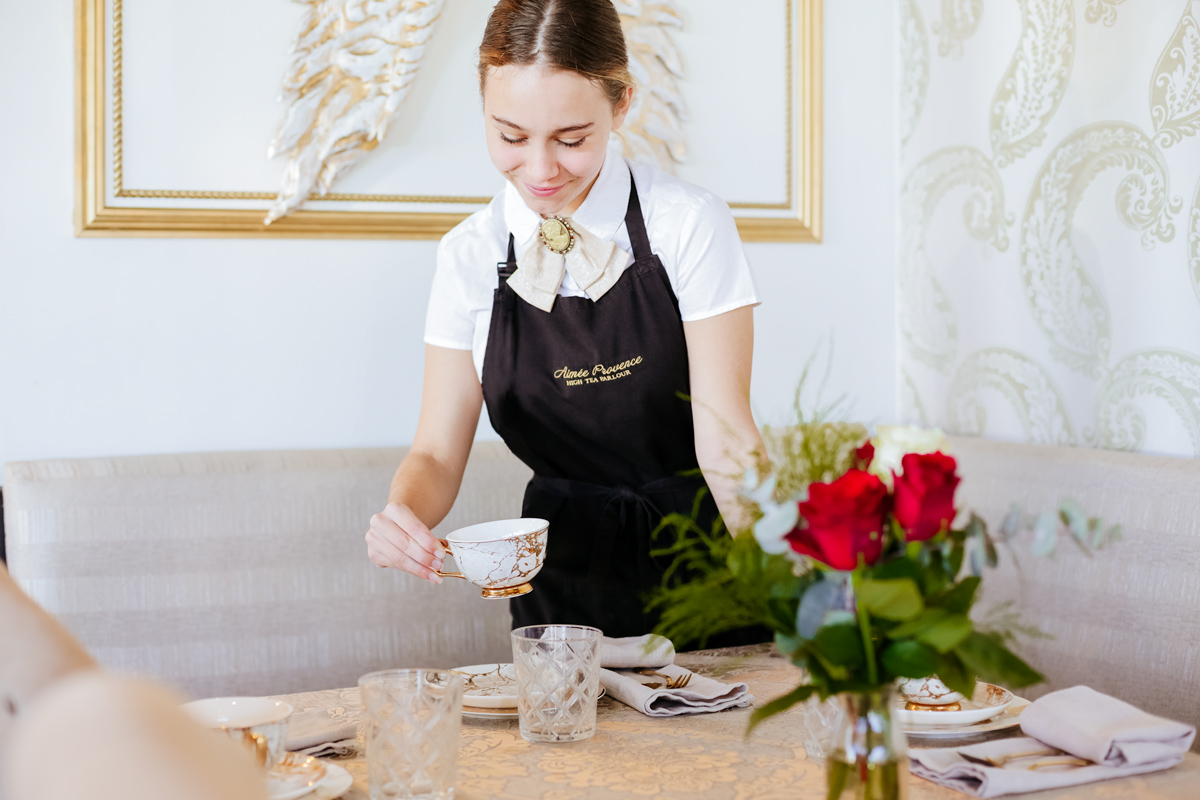
If you’re ever invited to afternoon tea with the Queen, you’ll find it a very formal occasion. Tea will be served between three and five pm and will consist of tea, sandwiches and a slice of cake. If you are invited to High Tea, it will be slightly more substantial. There will be a strict dress code and you’ll be expected to know how to behave at such an event. Happily, for the rest of us, afternoon tea or High Tea is not nearly so formal; it’s important you relax and enjoy the occasion. That said, whether guest or host, we know you’ll feel more at ease when you know what to expect at High Tea with us.
So, with no further ado, here are our eight most frequently asked questions:
1. I’ve been invited to Afternoon Tea: what should I wear?
The dress code for gentlemen is smart casual. So, trousers and a shirt (or even shirt and tie) is fine. No jeans or trainers. Your shoes shouldn’t be scuffed. Ladies, afternoon tea is the perfect excuse to have fun and dress up! See our recent blog on what to wear to high tea for expert insights!
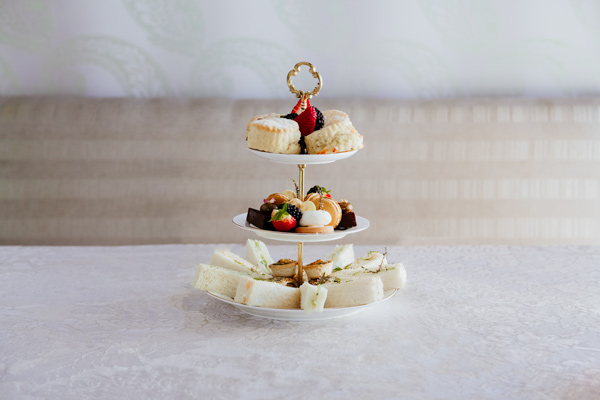
2. Is there a correct order to set or eat from a tiered cake stand?
- Top Tier: Scones are placed on the top tier and are eaten first. Why? Because traditionally scones are served warm and when tea parties first became popular in the 1700s, they were served under warming domes which only fitted if used on the top tier.
- Middle Tier: The middle tier is for cakes, pastries, and desserts. As a general rule cakes can be eaten with the fingers. In fact, High Tea is a fabulous excuse to eat with your fingers. Pastries and desserts are usually best eaten with a fork or spoon. Common sense should prevail here, if eating something with your fingers is likely to get messy, use a fork or spoon.
- Bottom Tier: If sandwiches are included, they will be served on the bottom tier. These are often cut into triangles or fingers and may have several layers, crusts removed. The sandwiches are deliberately small, dainty morsels so there is no need to use a knife and fork.
3. Scones: Cream first, or jam?
There are two schools of thought on this age-old debate. Traditionally, in Devon it’s cream, then jam while in Cornwall it’s jam then cream. The truth is, it doesn’t matter. It’s your personal preference. Nor does it matter whether you say scon (as in gone) or scone (as in phone).
If you want to be absolutely correct what actually does matter is how you eat your scone. If your scone is presented whole never slice it in half with your knife. Instead, tear it into bite-sized chunks. Use your knife to apply your choice of butter/jam/cream to the chunks.
4. What do I do with my napkin?
Napkins (and, by the way, it is called a napkin, not a serviette) tend to be one of those things that confuse people. Where do I put napkins if I’m setting a tea table? When do I need it? Where do I put my napkin if I leave the table? Panic not, it’s actually all really simple.
- Setting a tea table: place the folded napkin to the left of the plate. No matter the shape (triangle, square etc.) the folded edge faces to the left; the open edge faces to the right. Problem solved!
- When your tea is served, take your napkin, give it a light shake to release any folds, and lay it across your lap. If you leave the table, place the napkin back on the table, to the left of your plate. Never leave your napkin on your chair.
- When finished neatly fold your napkin and place it back on the table, to the left of your plate. This tells your host that you’ve enjoyed your tea and would like to be invited again.
The most frequently asked questions are about the tea itself: who pours it, when to add milk, stirring, and even drinking one’s tea. Relax, we’ve got you covered!
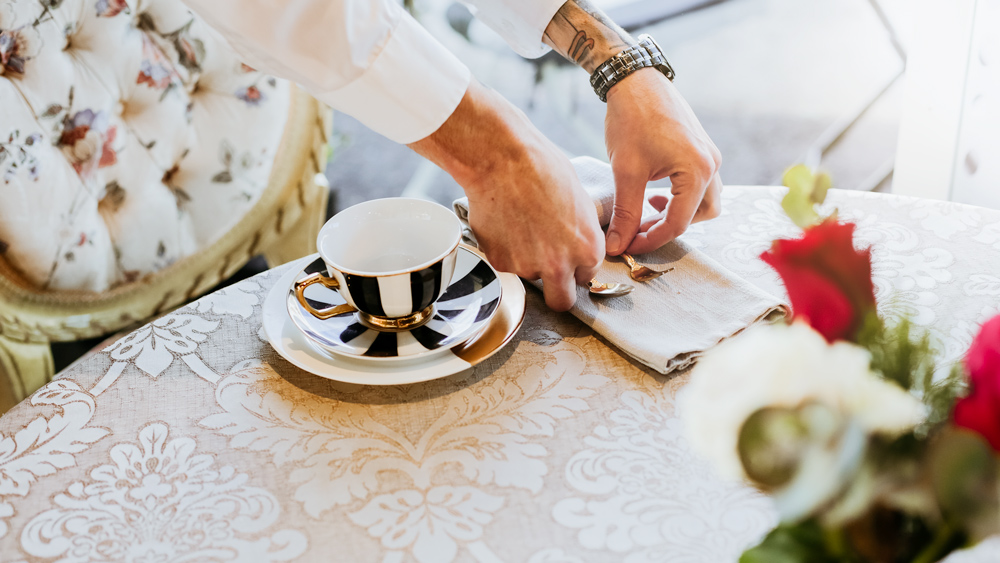
5. Who pours the tea?
It is customary for the host to pour. Once the tea is poured, the teapot should be left on the table, spout facing the person who poured.
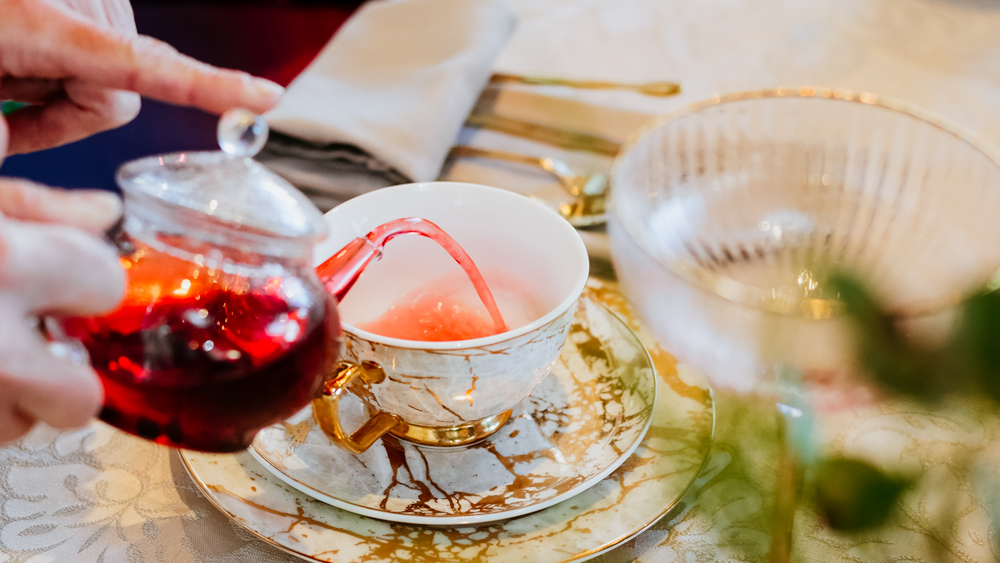
5. Milk: first or last?
This is another of those which comes first debates that really no longer matters. It did matter when tea parties became popular in England in the 1700s because the cups were made of very delicate porcelain, imported from China. The English liked to make their tea with water close to the boiling point so it made sense to add milk first to prevent the expensive cups from cracking. Thankfully, today, whether you prefer your milk or tea first, is a matter of personal preference. If you are making someone else, however, the general rule is to either ask if they take milk or to pour the tea and serve milk separately so they can add it if they wish to.
6. Is there really a right way to stir my tea?
So, your host has poured your tea and you’ve chosen whether or not to add milk. Now what? Well, believe it or not, there are some dos and don’ts about stirring tea.
- Don’t: stir your tea in a circular direction.
- Do: gently move your spoon between the twelve and six o’clock positions two or three times (no clinking)
- Don’t: leave the spoon in your cup. Instead, replace the spoon on the saucer, to the right of the cup.
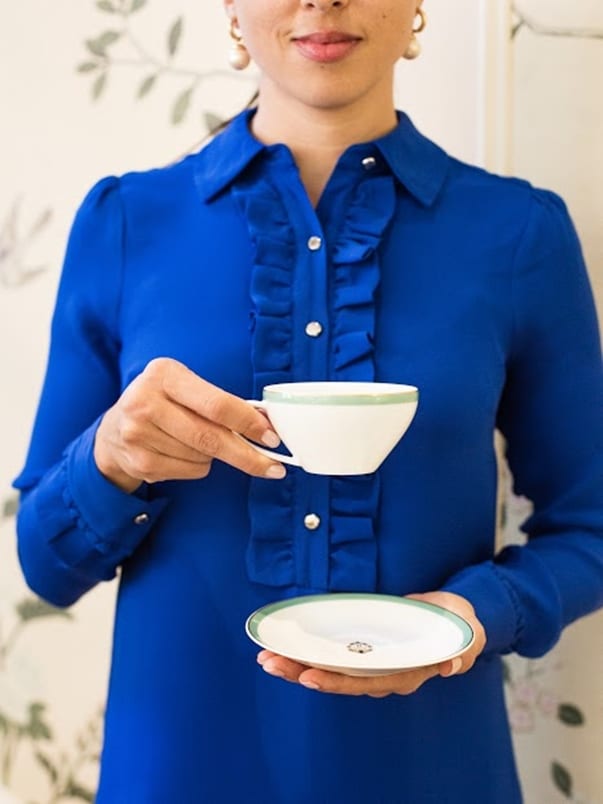
7. Tea cups can be quite small: How do I hold one?
This can make some people feel a bit awkward because teacups are smaller than the cups and mugs we might be used to. Plus, the handles are often too small to fit our fingers – so how do you hold a teacup with confidence? Fortunately, it’s actually really easy when your know-how! The trick is not to put your finger through the handle. Instead, pinch your index finger and thumb between the loop of the handle and place your middle finger along the base of the handle or the base of the cup, whichever is easiest for you, to support the cup. Try it, it really does make drinking from a tea cup very easy.
8. What about the pinkie finger? Do I raise it or not?
Whether or not to raise your little finger when drinking tea causes a lot of confusion. The simple answer is no. In fact, it is now considered a bit of an affectation. It used to be “a thing” in the 1700s before teacups had handles and were essentially small bowls. The best way to drink from these delicate porcelain bowls was to spread the hand around the bowl with the little finger raised for balance. The practice gradually faded from use with the addition of the handles. (See above for the correct way to hold a teacup today).
Bonus Tips:
- If seated at a table, leave your saucer on the table If standing, hold both cup and saucer up near your chest. In both cases replace the cup onto the saucer between sips.
- It is absolutely fine to request non-dairy milk if that is your preference.
- If your tea is too hot, wait for it to cool rather than blowing on it.
- Never slurp. Slurping has been shown to agitate others and you may find yourself getting some unwanted attention.
- It is never ok to dunk your biscuits in your tea when in company. (At home, of course, that’s a different matter, dunk away!).
- If asked to pass your cup, pass it on the saucer rather than the cup on its own.
So now you know the etiquette of High Tea. If you think about it, it’s not all that confusing. It’s really just about common sense and good manners. Good manners consist mainly of making sure everyone enjoys the experience. So, go ahead, treat yourself, your friends and loved ones to a gorgeous High Tea with confidence. You may never be invited to tea with the Queen but you can indulge in all the glamour and elegance of High Tea in our own elegant High Tea Parlour where the welcome is always warm, the setting is always beautiful and the treats are always dainty. And if you are lucky enough to be invited to the Palace, you can now navigate the etiquette of High Tea like a Royal!
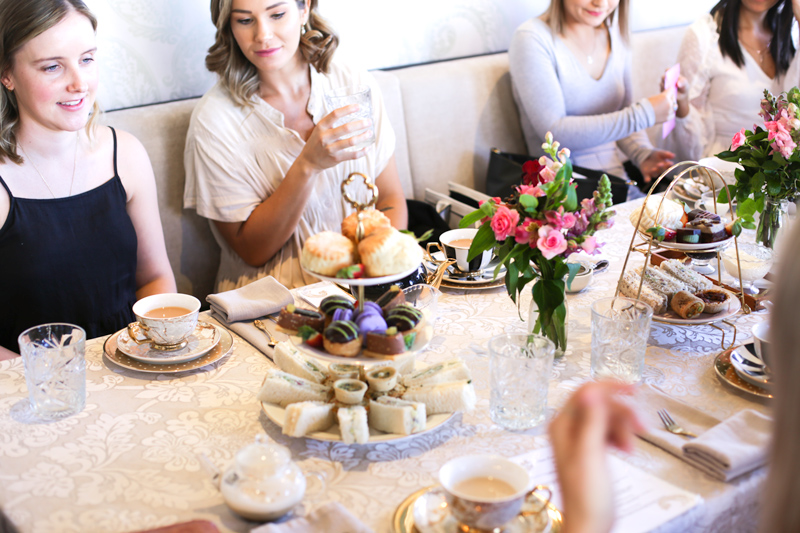

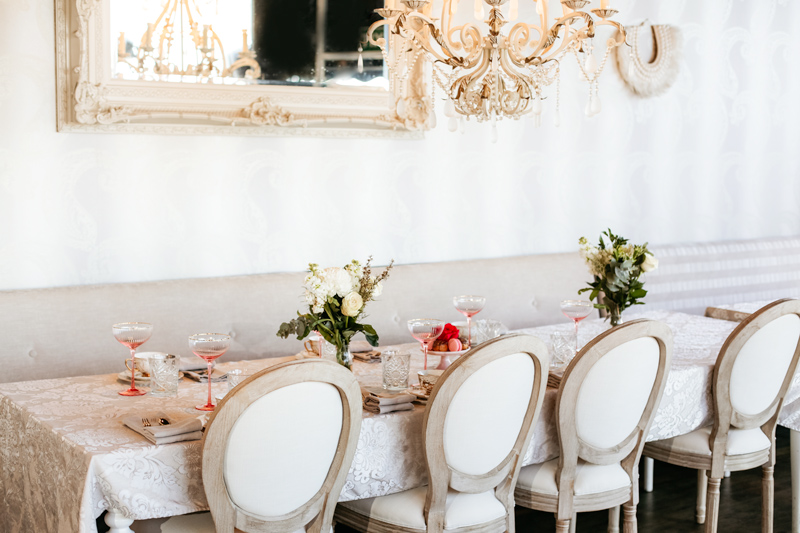
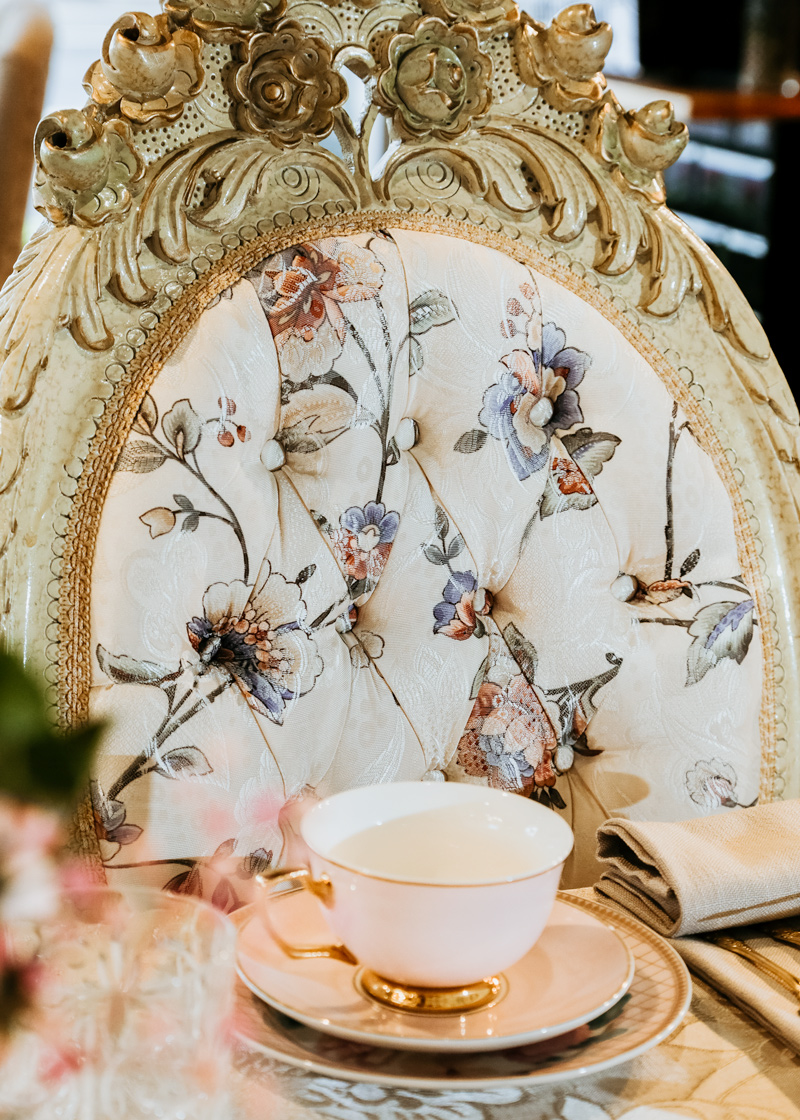
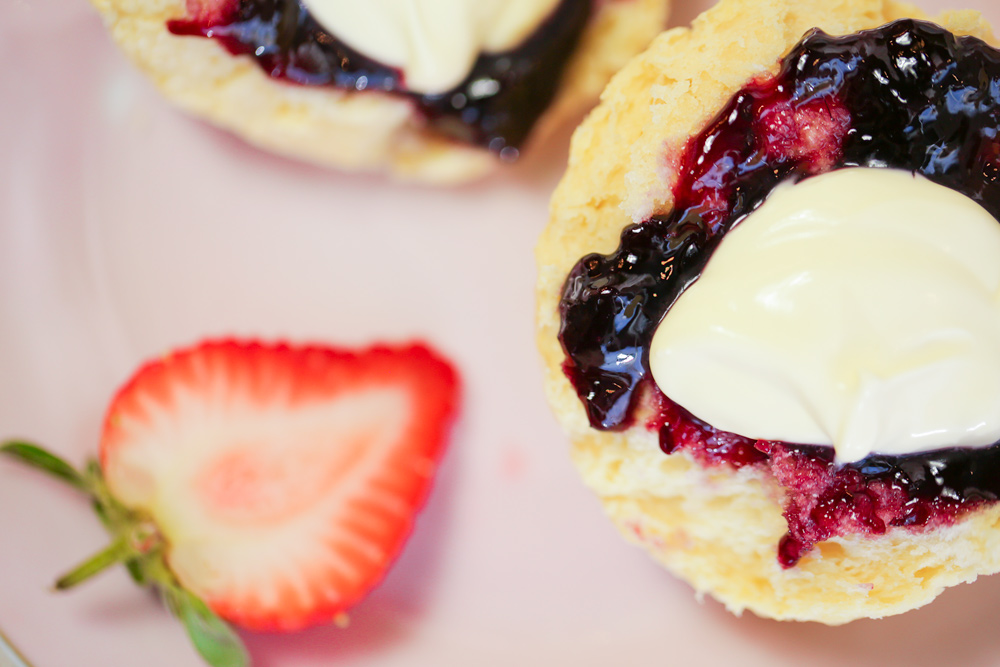

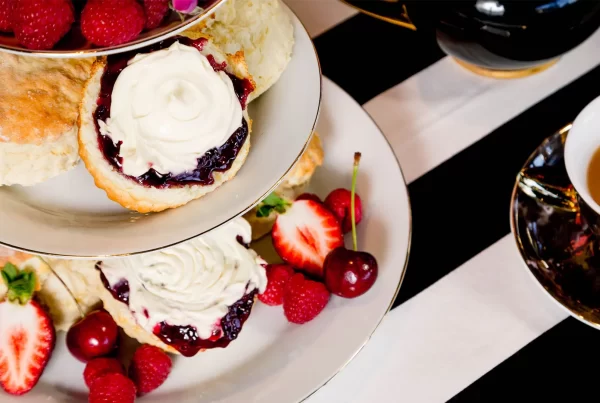
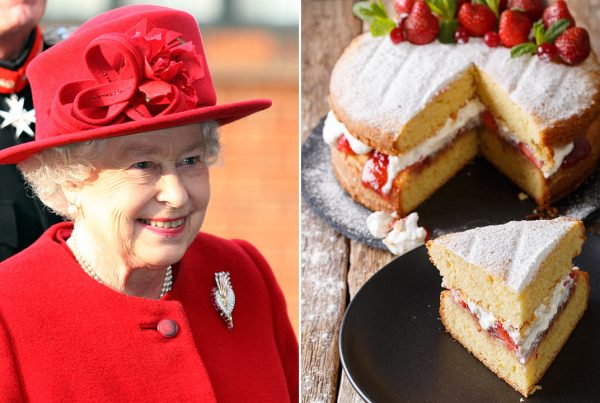
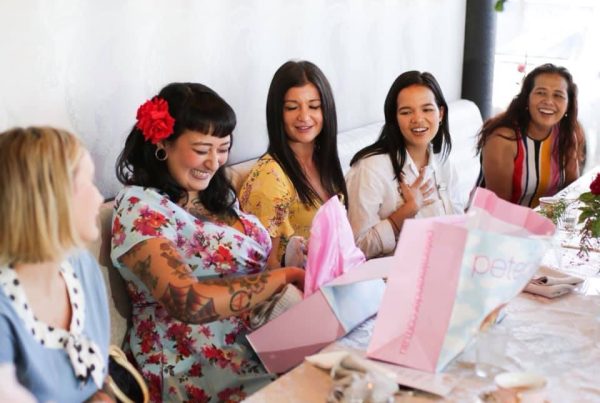
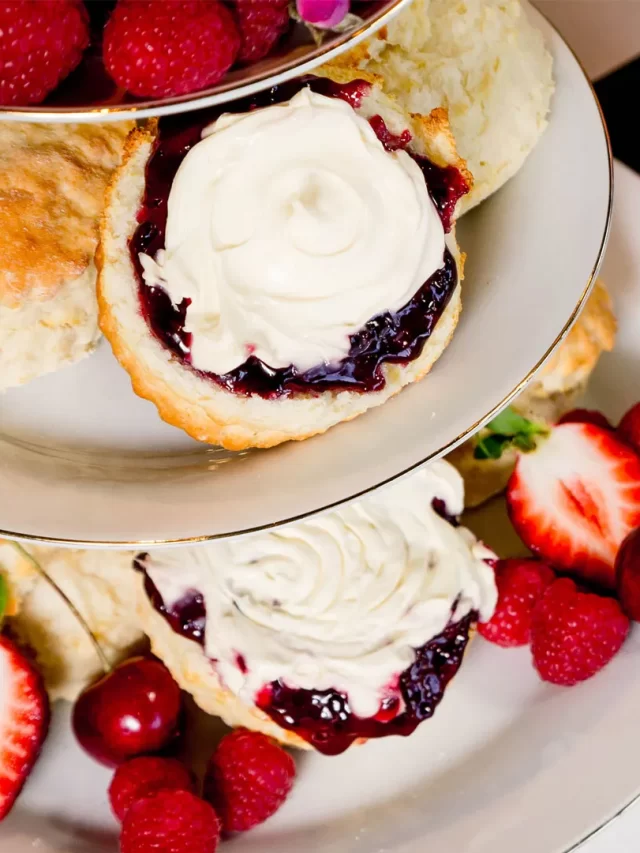
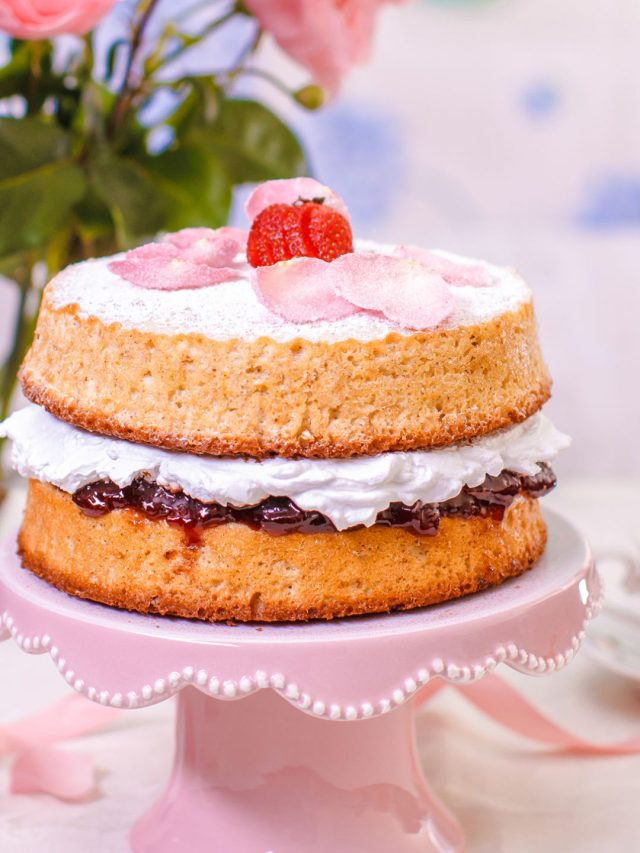


Regarding the order of eating the food provided in the High Tea, you suggests the scones should be eaten first, because they are warm, however, I think savoury sandwiches should be eaten first and sweet things afterwards.
Scones and or cakes should be eaten after the savoury sandwiches, quiches or pies.
Thank you for sharing your thoughts Ethel. We suggest eating scones first just because we would like you to enjoy your scones warm. However, It’s your personal preference and we want you to enjoy each individual tier regardless of our opinion.
We look forward to welcoming you soon for High tea.